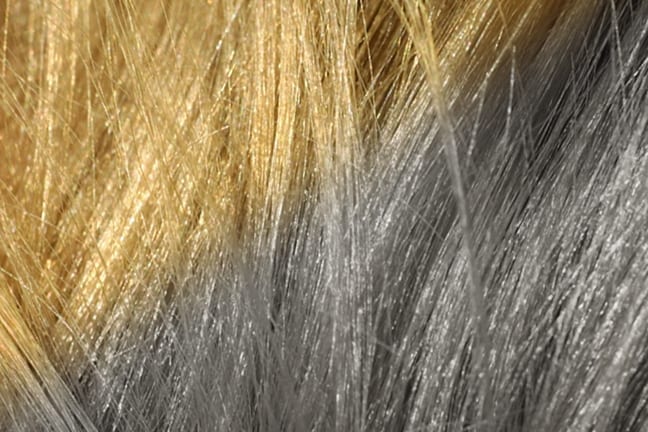Since the first day you were able to wield a hairbrush, you’ve been making choices about your hair—to grow or to cut, to blend in or to stand out, to style ornately or to keep it simple, to color or not to color. Your available style choices are limited only by the characteristics of your own hair, the talent of your hairstylist and possibly the requirements of your professional situation. Since it frames your face and is rarely covered by clothing, your hair is one of the most prominent elements of the image you choose to show the world. For many women, hair is a big and important piece of overall self-presentation. Healthy, luxurious, well-cared for hair can make you feel young, beautiful, and confident. Indeed, hair can be a major factor in self-concept and self-esteem.QUIZ: How Old is Your Hair? Find Out.Lady Gaga sums it up this way, in her song Hair:
I just wanna be myselfAnd I want you to know, I am my hair…I’m the spirit of my hair, it’s all the glory that I bear.
As you age, your hair ages with you. The reality is that 40 percent of women experience visible hair loss by age 40. This change in thickness is in addition to the loss of color, shine and texture that will likely occur at some point. You may feel that your crowning glory is not quite as glorious anymore. If your self-perception is focused on having stereotypically youthful hair, your self-esteem is likely to take a dive if you no longer see yourself as fitting that description.MORE: Lady Gaga’s Eating DisorderThe December issue of People Stylewatch showed photos of “50 Hot Holiday Hairstyles.” All 50 of the photos showed thick, shiny hair in a variety of rich colors—none of them gray or white. Clearly the stereotypical preferences of society as reflected in the media, value “youthful” hair. Meanwhile, your hair is changing and your list of style options is getting shorter.So, what’s a girl to do? Thanks to the hard work of many scientists and stylists, you have some choices. You can hold tight to your “younger” presentation, using various dyes and potions and tricks of the trade to retain that image as long as possible. You can embrace your changing hair in its natural state. Or you can choose an intermediate path—retaining some “youthful” elements of your hair, while permitting others elements to evolve. Maybe you color, but change the style. Maybe you don’t fight the graying, but wear it long. As with your changing body and skin, you need to figure out how you want to handle your changing hair, allowing your style to evolve along with your self-concept.Whatever your choice, your hair should be a positive part of your overall self-image. It should help you feel attractive and confident. So, the most important consideration is: What feels right to you? If your hairstyle feels like a good match with who you are inside, fits well with the rest of your self-presentation, and makes you feel good, then it’s the right style for you.MORE: Why Hair Means So Much to Us




































